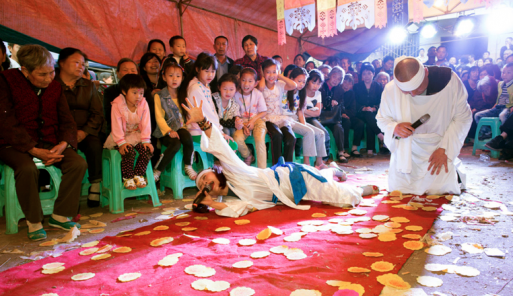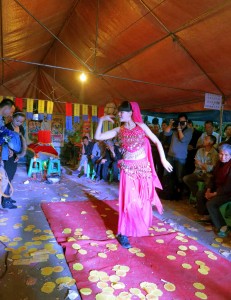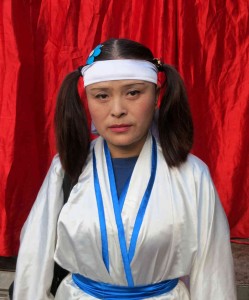
Dingding Mao performs the wailing portion of the ritual. Photo credit: NPR
The ancient funeral rituals of China have been experiencing a popularity renaissance.
In what is described by NPR as a “final, dramatic and tearful farewell,” the revived funeral rituals combine music, food and drink with an emotional performance by a “professional griever” to help the bereaved family obtain a sense of closure.
The funeral rituals are deeply rooted in Chinese culture, dating back over 2,000 years to the Han dynasty. But the employment of professional grievers-those who are hired to express grief and engage in song and dance for the dead-is a recent development.
1,000 years ago, those performing the mourning ritual would have been a member of the family. Today, becoming a professional mourner has developed into a viable career opportunity.
“These funeral rights,” states NPR, “have become an income source to a select few who stage funeral extravaganzas.” The result? A contemporary blend of deeply rooted tradition and modern spectacle.
Hu Xinglian has developed herself into a poster-child of sorts for the profession. Outside of work, she is known as Xinglian. But once hired, she becomes Dingding, or Dragonfly, Mao. “We need to show our feelings for others to see…some people can’t cry,” she explains. And that sometimes means it is necessary to hire a professional “to display the filial piety of the offspring” and encourage the grieving cycle. It’s a reality that may have resulted from the ban that existed over the rituals during China’s Cultural Revolution. During that time, they were categorized as superstitious and were consequently banned.
“We need to show our feelings for others to see…some people can’t cry,” she explains.
Mao starts off her ritual performance with a sobering eulogy, which is soon followed by the beginning notes of a melancholic funeral song. Then, Mao will begin articulating the sorrow of the family’s grief by moaning and crawling on the ground; “You were like a tall tree sheltering your kids from the wind and rain,” she cried at a ceremony for a deceased man named Zhang Tujin, “We never thought you’d leave so soon.”
The family will sit at a table dressed in all-white, the traditional Chinese color for grieving, to observe Mao wail with her troupe in front of the body of the deceased. In Chinese culture, grief must be shown in a noisy fashion; the Association for Chinese Funeral Culture says “the children and grandchildren of the dead must express their grief in a noisy manner, and with plenty of tears, before the burial.”
“You were like a tall tree sheltering your kids from the wind and rain,” she cried.
Professional mourners also ask the family for details on the deceased beforehand so that the ritual may feel more personal and intimate.
Another professional mourner named Hu explains that the job is “very difficult, and very trying…you must express sadness and pain for a family that has lost a loved one. You really have to have great control over your emotions.”
But just as quickly and intensely as the wailing portion of the ritual starts, it is interrupted by a spirited belly dance.
Mao may begin the ritual by crying and leading the family members in prayer—but soon she is dancing to strobe lights and karaoke eulogies with contemporary dance moves.
The revival of China’s funeral rituals has introduced a unique grieving experience that blends tradition and modernity. And most importantly, it helps families cope with the death of a loved one. “The mood [had] lifted,” described an attendee of Tujin’s funeral, “like sunshine after rain, [with] people wiping away tears and smiling.”
Related Articles:
- Death Rituals in Somalia
- Famadihana: The Malagasy Perspective on Death and Burial
- The Little Known Ritual of Endocannibalism

 The Revival of Chinese Funeral Customs
The Revival of Chinese Funeral Customs




 First the Wealth Gap, Now the U.S. Has a Growing Health Gap
First the Wealth Gap, Now the U.S. Has a Growing Health Gap
 How to Comfort A Dying Loved One
How to Comfort A Dying Loved One
 Our Annual Seven Holiday Gifts for Someone Who Is Grieving, 2024 Edition
Our Annual Seven Holiday Gifts for Someone Who Is Grieving, 2024 Edition














